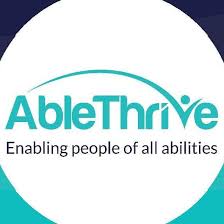 (This blog tells my family's story. To see more, click "blog" at the top of this webpage.) Beth’s first health crisis arrived suddenly on a brittle January morning, about eight months after her injury. The nurse at our pediatrician’s office took one look at her and led the way to the doctor. After chest x-rays at the hospital, we waited while they called our pediatrician. He told me on the phone that Beth had pneumonia and I interrupted his plan to admit her to the Tiffin hospital. With his consent, I immediately called Dr. Miller, who sent us to Toledo. I focused on the icy roads to keep my breathing steady. Admitted to intensive care at the Toledo Hospital, Beth had never been so sick before. Her childhood asthma returned stronger than it had ever been. Extreme, relentless, uncomfortable symptoms alarmed us. Every labored breath ended in a wheeze. Her weak cough could not clear her partially paralyzed lungs. Her fever spiked too high repeatedly despite strong IV medicine. Her blood pressure, consistently low since the injury, fluctuated. With breathing treatments around the clock, a team of lung doctors for children closely supervised Beth’s care during the days. At night, a nurse checked on her frequently and called a doctor more than once to increase medication or add another. Four bad days and nights melted together with no improvement and little rest. I fixed pillows, offered fluids, and held Beth’s hand, unnerved at how little I could do to help. A nurse carried a few get-well flower bouquets out of the room to remove possible allergens. A doctor talked about surgery to dislodge the mass in a lower lung. He also showed me how to do physiotherapy by pounding her chest and back with a cupped hand. On the fifth day, Beth could breathe a bit easier, and asked to look at her pile of schoolwork for the first time that week. The sixth day, a technician in a gown and mask wheeled in a portable x-ray machine, which showed a smaller pocket of pneumonia. A PICC line for IV antibiotics was scheduled before discharge on the seventh day. An intern started to thread a tiny tube through a vein in my daughter’s right arm to her heart—with no pain medication first. Beth’s left hand suddenly touched mine, her eyes wide. With limited sensation in her arm, the pain had to be significant. When I questioned the intern, she said the procedure was almost over. I hugged half of Beth through TEN more minutes while she wiped away silent tears with her left hand. Our first evening back home, a nurse arrived to connect the IV antibiotics to the PICC line, and left before it finished draining. Beth’s upper right arm swelled, hot and red. I called Dr. Miller in a panic and couldn’t stop myself from crying on the phone. She told me to disconnect the IV. If the swelling went down, we should drive to the hospital in the morning to have the PICC line taken out. If it didn’t, Beth would need an emergency room that night. I turned on the nebulizer for another breathing treatment, and lay down on the hospital bed beside Beth, hugging the arm with the PICC line. I checked her arm through the night. Would she be admitted to the hospital again? Would the leaking vein cause other problems? Would her lungs clear without IV antibiotics? Dr. Miller met us in Toledo on a Saturday morning to take out the line and prescribe strong oral antibiotics. I apologized for my emotional phone call the night before. I asked her how to avoid respiratory problems in the future, a futile attempt to ease my relentless anxiety. I scheduled a follow-up appointment with the lung doctors, the first of many. Beth found an upside to the scary week in intensive care. “I tired easily and fought infections and a bout of pneumonia the first year after my injury, but through it I learned how to take care of myself and reduce health risks.”
4 Comments
 (This blog tells my family's story. To see more, click "blog" at the top of this webpage.) Seven weary months had passed since Beth’s injury. My favorite time of year, Christmas, was a blur. Ben came home from college and together our family of five visited grandparents, aunts, uncles, sisters, brothers, and cousins on the Lake Erie shore. When my Grandma Henning passed away, my parents moved from Lorain to the family homestead in Vermilion. Built by my great-grandfather, the old farmhouse never failed to invoke broad chords of memory along with tinges of sadness for my grandma’s absence. As a child, I was there every Sunday with my brother and sister and cousins, and parents and aunts and uncles. It was the place where I watched Grandma make sweet kuchen and grape jam (with the skins) and every kind of deliciousness. The place where I blew out birthday candles and found a four leaf clover that I pressed in my diary. The farmhouse also was a place that was inaccessible in every possible way, with the stone driveway, entry steps, and tiny bathroom that didn’t fit a small wheelchair. Beth didn’t mind. Ben and Maria handled the steps with the wheelchair. At the house in Lorain where my in-laws lived, also inaccessible, John’s oldest sister Jean greeted us at the door. She liked Beth’s wheelchair and wanted one of her own. Jean, born with Down syndrome, counted down the days to every family birthday and holiday. She knew that her January birthday was before John’s in February, so every Christmas, he teased her that his birthday was next. When we arrived back in Tiffin, Timber welcomed us home. I had photographs printed at a local store from the holidays. My smile in some of the photos contradicted my feelings, but not my goal. I focused on not giving the people I loved more to worry about, especially after I accomplished that spectacularly well with the accident. One of Beth’s presents was a molded piece of plastic that sat on the table in front of her and held playing cards in a vertical position. John and I played bridge with Ben and Beth using new bigger cards and the plastic piece. By the end of the evening, she put the plastic to the side and experimented. When she held the cards in her right hand with the tenodesis grip, she raised up a specific card with her lips. Then, she used her one moving finger to set the card on the table or adjust her grip. As Beth’s best friends arrived for New Year’s Eve at our house, we made a mess in the kitchen with my grandma’s brownie recipe. Beth christened her new fondue set with chocolate and an elaborate spread that included brownies, marshmallows, pretzels, and fresh fruit. The girls camped out in sleeping bags and watched the new Grinch movie, played with Timber, and dipped treats in chocolate. I listened to their easy, carefree laughter. For me, the New Year loomed with brewing threats, with emergencies and tragedies a heartbeat away.  (This blog tells my family's story. To see more, click "blog" at the top of this webpage.) “My friends have been very positive, full of encouragement, and have accepted my disability, and treated me just like everyone else,” Beth said. At the high school, her friend Jackie bumped her manual wheelchair down two wide steps in the music room. One day, a small wheel turned sideways. After the girls tumbled to the floor, they burst out laughing. Beth, 14 years old, described the scene soon after it happened. “My choir teacher pretty much freaked out at first and he got me back into my chair really fast. It was funny!” The concerned choir director offered to change where Beth sat to avoid the steps, but she declined. Like Ben and Maria, she had inherited perfect pitch, probably from their grandmothers who had sung for weddings in times gone by. During my recent trips to volleyball tournaments, long drives, I loved how my girls had belted out their favorite songs with the radio. After the accident, Beth’s lung capacity limited the strength of her voice, but not her love of music and singing. I drove Beth to Green Springs three times a week after school. The physical therapists reminded my tired and pale daughter to take care of herself. She wasn’t getting enough sleep. By the time we arrived home on therapy days and ate a late dinner, the evenings barely allowed for the extra time needed for routine tasks like showering and too much homework. Marathon days for a newly injured teenager with quadriplegia. I struggled to keep up, too: bone-tired, hurting, and deeply sad. Laraine asked us to help with a teaching seminar for therapists, the first of many, on a Saturday. “I call on Beth to talk to newly-injured spinal cord patients,” Laraine said. “Her skills inspire them and her attitude is positive and motivating.” One of the therapists asked me what they could do to support parents. I responded that taking good care of our children was the best gift. I didn’t try to explain my tunnel vision, with no light at the end. At that point, I wanted to have hope, but I couldn’t see past my guilt. The therapists also had questions for Beth. “Most people dread hospitals and hate them. I don’t,” she said. “I have met many great people in hospitals. The St. Francis Rehab Hospital is my second home and my physical therapists are like family. Some may look back on my initial days at St. Vincents with depression and grief, but my experience was positive, except maybe the first day. To me, hospitals are not places of sadness.“ For the main part of the teaching seminar, Beth followed the initial steps of every workout and struggled to get on the mat table. Her favorite therapist assisted and described the muscle mechanics of the exercises. “Beth still faces many new challenges,” Laraine said. “I know she is up to the task.”  (This blog tells my family's story. To see more, click "blog" at the top of this webpage.) In early December, the annual Christmas party of the spinal cord injury group filled a big hall in Toledo. Beth made a frequent request: to not park in a handicapped space. We left the space for those who needed it more. Other parents offered me effortless conversation. We lived in the same world, one with the added dimension of disability. I heard stories of spina bifida, cerebral palsy, spinal cord injury, and multiple sclerosis, of wins and losses. Surrounded by significant disability, my emotional battle seemed pathetic. Despite the obvious perspective, my depression wouldn’t budge and generated senseless comparisons. A wide gulf separated two typical hands with ten functioning digits from two paralyzed hands like Beth’s, with one finger she could move a little bit. Another contrast: the ability to stand for at least a few moments made transfers and changing clothes a cinch—in comparison to her inability to bear any amount of weight. Our new friends at the party understood the complexity of movement. They also knew that Beth's dimpled smile did not negate the many challenges of quadriplegia. “No amount of smiling at a flight of stairs has ever made it turn into a ramp,” said Stella Young, a disability advocate. The saying on one of Beth’s t-shirts read, “Stairs, the Final Frontier.” I expected to hold my daughter's plate at the buffet line, but she put a plate on her lap and let me help only with items she couldn’t reach. Then, for the first time, she picked up an open cup full of punch that dripped over the top as her left hand compressed the plastic with the tenodesis grip. The bottom side of the same hand slightly pushed one of the big wheels, while the right hand moved the chair forward, since one-handed wheeling turned a chair in circles. Nervous, I tried to assist with a gentle push and she immediately said, “Don’t.” She willingly accepted the inevitability of small spills along the way and the bigger risk of dropping it. I followed her slow progress to a nearby table where she concentrated on releasing the cup with care. A minute later, Beth picked up the wet cup to take a drink. It slipped from her grasp, the liquid pooling on and off the table. I cleaned it up and set another full cup in front of her—without asking first. After the party, Beth’s new anxiety with night driving surfaced. I encouraged her to close her eyes and rest. She couldn’t relax. I didn't like driving in the dark, either, but I focused on getting home safely and started her new N’Sync Christmas CD. We sang along, quietly. |
Cindy KolbeSign up for my Just Keep Swimming Newsletter by typing your email address in the box. Thanks!Categories
All
Archives
November 2022
|

 RSS Feed
RSS Feed











